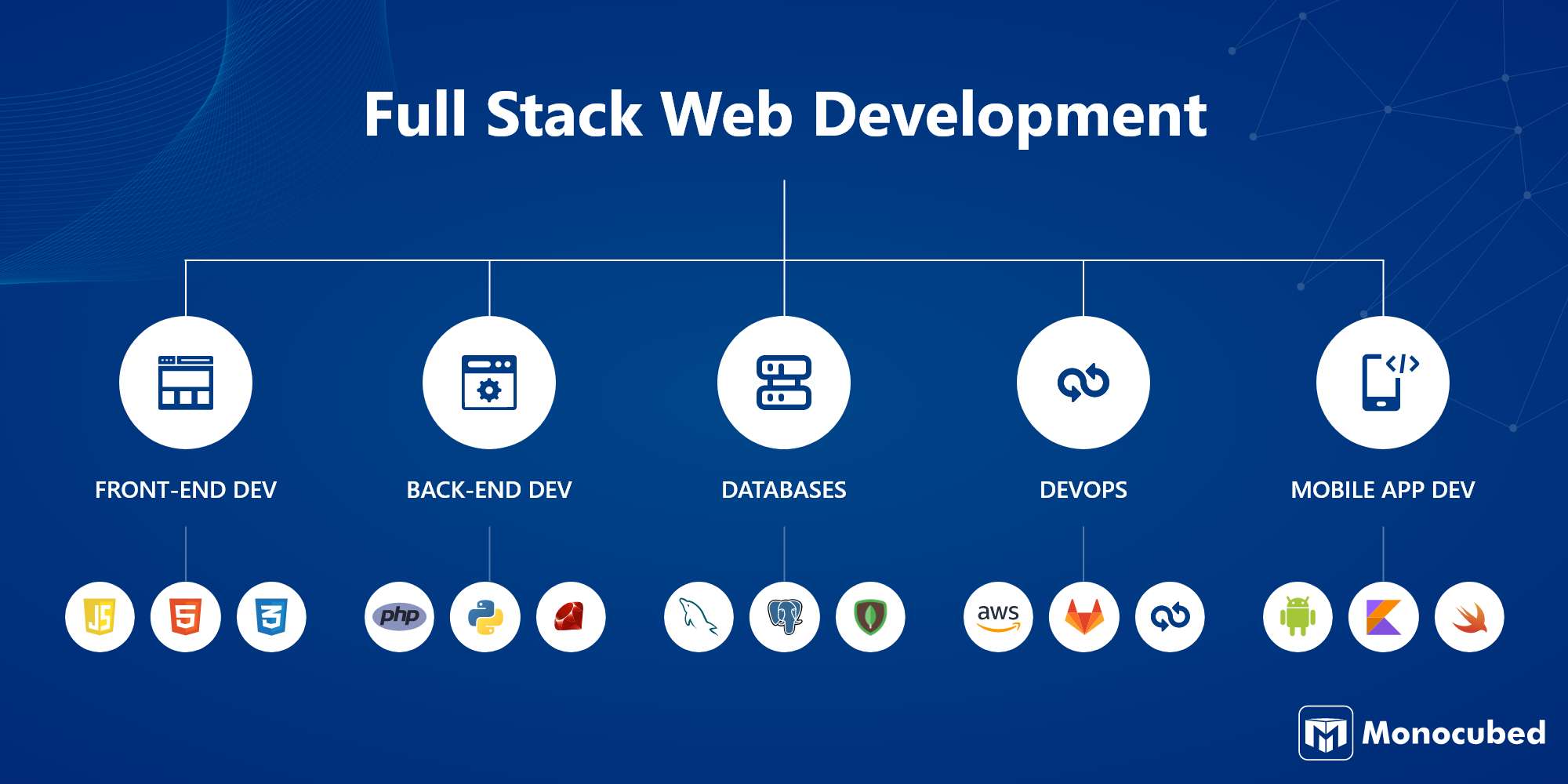Ahlian Jian Insights
Exploring the latest trends and news in various fields.
Full-Stack Development: The Secret Sauce Behind Modern Applications
Unlock the secrets of full-stack development and discover how it powers the modern apps we can’t live without!
Understanding the Full-Stack Development Process: A Step-by-Step Guide
Full-stack development is an essential aspect of modern web applications, involving both front-end and back-end processes. To understand the full-stack development process, it's helpful to break it down into key stages. These stages typically include planning, design, development, testing, and deployment. In the planning phase, developers outline project goals and determine the technologies needed. The design phase focuses on creating wireframes and user interfaces that ensure a positive user experience.
Once the planning and design are complete, developers move to the development phase, where they write code for the front end using technologies like HTML, CSS, and JavaScript, and for the back end using languages such as Python, Ruby, or Node.js. After development, the testing phase is crucial for identifying and fixing bugs, followed by the deployment phase, where the application is launched to the public. Understanding these steps provides valuable insight into how full-stack development operates and equips aspiring developers with the knowledge to undertake their own projects successfully.

What Skills Do You Need to Become a Successful Full-Stack Developer?
To become a successful full-stack developer, one must possess a diverse set of skills that spans both front-end and back-end development. At the front-end, proficiency in languages such as HTML, CSS, and JavaScript is essential, as these are the building blocks of web design. Additionally, familiarity with frameworks like React or Vue.js can enhance your ability to create interactive user interfaces. On the back-end, a strong understanding of server-side languages such as Node.js, Python, or Ruby is crucial for developing the underlying logic and database interactions, while experience with databases like MySQL or NoSQL solutions such as MongoDB is equally important.
Furthermore, successful full-stack developers should possess solid problem-solving skills and a good understanding of software development methodologies, such as Agile or Scrum. They should be comfortable using version control systems like Git to facilitate collaboration in coding projects. Strong communication skills are also vital, as developers often work closely with designers, project managers, and clients to ensure that the final product meets all requirements. By honing these skills and continuously updating their knowledge, aspiring full-stack developers can greatly enhance their employability and success in this dynamic field.
The Future of Full-Stack Development: Trends and Best Practices
As the digital landscape continues to evolve, the future of full-stack development is poised for significant transformation. Developers are expected to adapt to emerging technologies such as artificial intelligence and machine learning, which will enhance user experiences and streamline development processes. The emphasis on responsive design and mobile-first approaches will only grow stronger, as an increasing number of users access web applications through mobile devices. Additionally, the shift towards cloud computing and microservices architecture will enable developers to build scalable applications more efficiently, making it essential for full-stack developers to familiarize themselves with platforms like AWS and Azure.
In order to remain competitive in this dynamic field, full-stack developers must adopt best practices that include continuous learning and embracing new frameworks and libraries. Collaboration and effective communication within teams will become increasingly vital, as agile methodologies take precedence in software development. Version control systems, such as Git, will play a crucial role in managing codebases across diverse team members. As the industry progresses, developers should also focus on improving their problem-solving skills and understanding user requirements, thus ensuring that they create applications that not only function well but also provide meaningful user experiences.